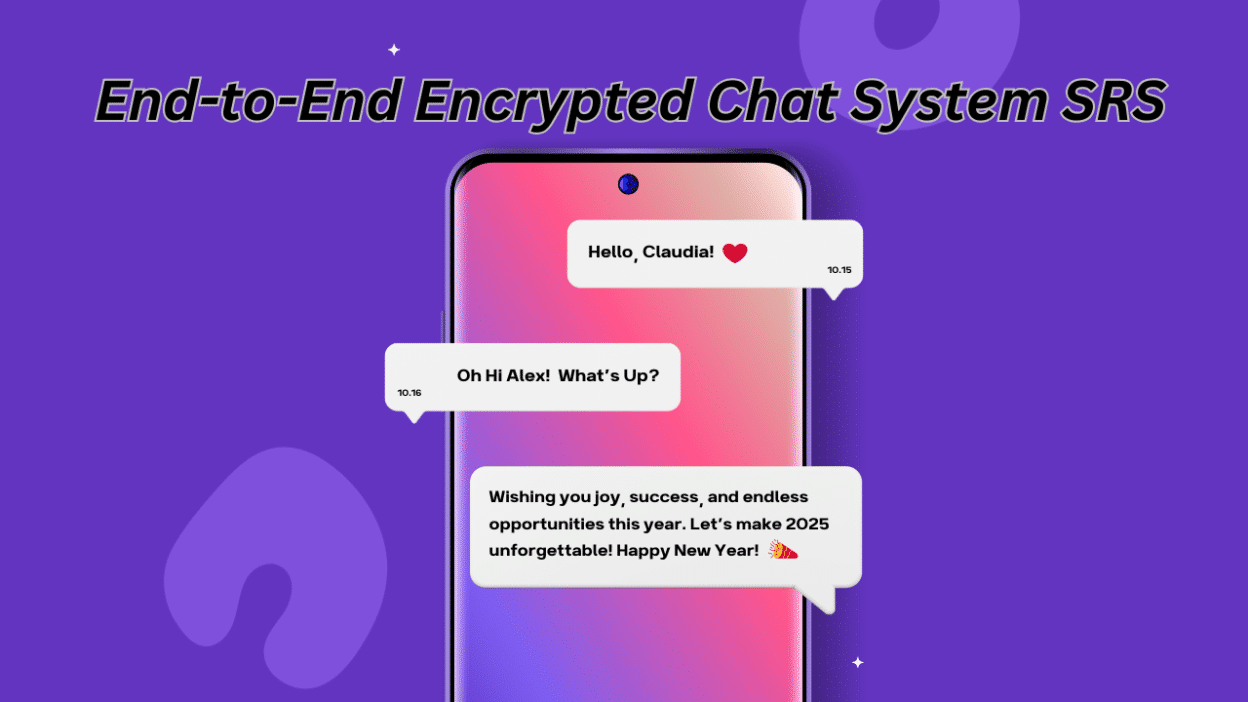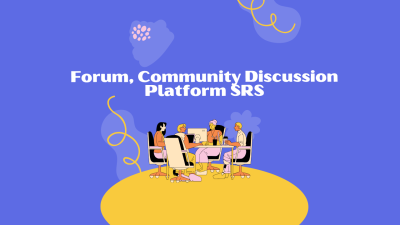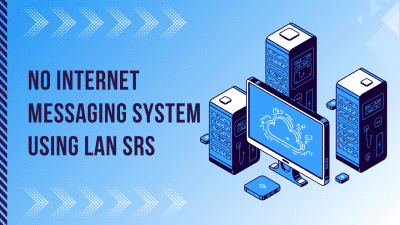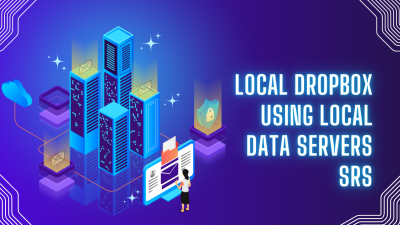Project Overview
Online chats should feel safe, not like someone’s peeking over your shoulder. This end-to-end encrypted chat system locks down conversations, making sure only the sender and receiver can read messages—no servers, no third parties, no leaks.
Messages, media, and even group chats stay fully encrypted, with RSA for key exchange and AES-256 for message security. Everything runs in real-time with WebSockets, keeping conversations smooth and private. Even if the server gets compromised, stored chats remain unreadable.
Built with React, Node.js, and a powerful encryption engine, it balances speed with airtight security. AWS or DigitalOcean handles hosting, while Docker keeps deployment clean and scalable. Two-factor authentication adds an extra layer of protection, making sure user accounts stay locked down.
More features are coming—voice and video calls, mobile support, and encrypted file transfers. Privacy isn’t an option, it’s the foundation. Safe chats, no eavesdroppers, just pure encrypted communication.
Introduction
Purpose
This project aims to develop a secure chat system that ensures privacy by implementing end-to-end encryption. Messages exchanged between users will be encrypted at the sender’s end and decrypted only at the receiver’s end, making it impossible for any third party, including the server, to read the content of the messages.
Scope
- Users can register and log in securely.
- Real-time messaging with end-to-end encryption.
- User-to-user text communication and media sharing.
- Group chats with encryption for multiple participants.
- Encrypted storage for user chat histories.
Target Audience
- Individuals and organizations needing a secure communication platform.
- Developers or businesses working on secure messaging solutions.
- Privacy-conscious users concerned about online data security.
Definitions, Acronyms, and Abbreviations
- End-to-End Encryption (E2EE) – A method where only the sender and recipient can decrypt the messages.
- AES – Advanced Encryption Standard, commonly used symmetric encryption algorithm.
- RSA – Public-key encryption algorithm, used to securely exchange encryption keys.
System Features
User Registration and Authentication
- Secure user registration with email verification.
- Two-Factor Authentication (2FA) for added security during login.
Real-Time Messaging
- Text-based messaging with end-to-end encryption using AES.
- WebSockets / Socket.IO for real-time communication.
- Message Delivery Receipts to confirm when messages are delivered and read.
Media Sharing
- Users can send images, audio, and files securely.
- Media is encrypted before transmission and only decrypted at the recipient’s end.
Group Chat Support
- Multiple users can create and join encrypted group chats.
- Each participant’s messages are encrypted with a unique key.
Encrypted Message Storage
- Message histories are encrypted and stored on the server, ensuring that even if the server is compromised, the messages remain unreadable.
Privacy and Security
- End-to-End Encryption (E2EE) for all messages and media.
- Secure key exchange using RSA to ensure that only the intended recipient can decrypt the messages.
- Zero-Knowledge Server Model: The server does not store any keys or message contents, ensuring full privacy.
Technology Stack
Frontend
- React.js / Vue.js – For building an interactive and user-friendly UI.
- HTML, CSS, JavaScript – For frontend structure and styling.
- WebRTC – For enabling real-time voice/video calls (optional).
Backend
- Node.js (Express.js) – For handling user authentication, messaging, and real-time communication.
- WebSocket / Socket.IO – For establishing real-time connections between users.
Encryption Algorithms
- AES-256 – Symmetric encryption for securing messages.
- RSA – Public-key encryption for secure key exchange between users.
Database
- PostgreSQL / MongoDB – To store user profiles and metadata (not the content of encrypted messages).
- Redis – For temporary storage and message queue management.
Hosting & Deployment
- AWS / DigitalOcean – For secure cloud hosting.
- Docker – For containerization and easy deployment.
System Architecture
High-Level Overview
- Frontend: A web-based interface for users to send/receive messages and share media.
- Backend: Handles the user authentication, message routing, and encryption/decryption of messages.
- Encryption Engine: The system will use RSA to exchange keys and AES to encrypt/decrypt the actual messages.
- Database: Stores user profiles, metadata, and message timestamps (but not the actual message content).
- Real-Time Messaging Server: Uses WebSockets to transmit messages between users in real time.
Flow of Data
- A user registers and logs in using email and password, with 2FA for added security.
- When a message is sent, the message is encrypted using the recipient’s public key (RSA) and sent through the WebSocket connection.
- The recipient decrypts the message using their private key (RSA) and then reads the message, which was encrypted in transit using AES.
- Messages and media are stored encrypted on the server.
- For group chats, a separate encryption key is used for each participant.
Implementation Guide
Development Environment Setup
- Install Node.js/Express.js for the backend development.
- Set up React.js for frontend development.
- Implement RSA and AES encryption in JavaScript using libraries such as crypto-js or node-forge.
Core Feature Development
- User Authentication and Registration – Implement secure login and registration with email verification and 2FA.
- End-to-End Encryption – Set up RSA for secure key exchange and AES for message encryption.
- Real-Time Messaging – Implement WebSockets/Socket.IO for real-time messaging.
- Media Sharing – Enable encrypted media sharing (images, audio).
- Group Chats – Develop encrypted group chat functionality.
Testing & Debugging
- Use Mocha/Chai for backend testing and Jest for frontend testing.
- Ensure encryption/decryption works properly and messages are securely stored and transmitted.
Deployment
- Host the backend and frontend on AWS/DigitalOcean.
- Containerize the application using Docker for easy deployment and scalability.
Testing & Deployment
Functional Testing
- Test the functionality of message sending/receiving and media sharing.
- Test the decryption of messages and media on the recipient’s end.
Security Testing
- Test the RSA encryption and AES decryption to ensure there are no vulnerabilities.
- Test the 2FA functionality to secure user accounts.
Deployment
- Deploy the backend on AWS or DigitalOcean with SSL encryption for secure connections.
- Ensure real-time messaging works seamlessly across multiple users and devices.
Future Enhancements
- Voice and Video Calls – Integrate WebRTC for real-time encrypted voice and video calls.
- Mobile App Support – Develop iOS/Android apps for encrypted messaging on the go.
- File Encryption – Allow users to securely send large files with encryption.
- Advanced Privacy Features – Implement self-destructing messages or encrypted backups.
Conclusion
Privacy should never be a luxury. Conversations deserve to stay personal, untouched by prying eyes. Encryption makes that possible, turning every message into a locked vault. No middlemen, no unwanted access—just secure, seamless chats. The future of messaging isn’t about fancy features, it’s about trust. And trust starts with real security.




